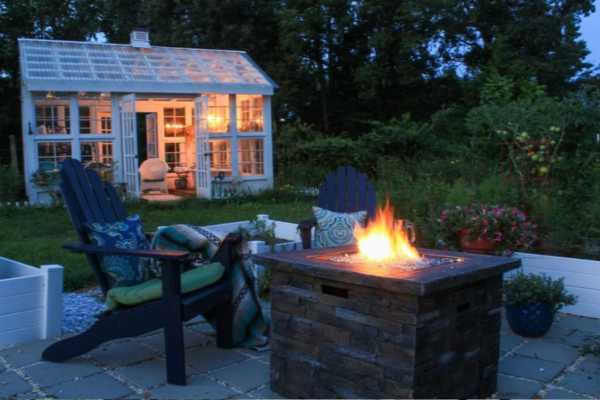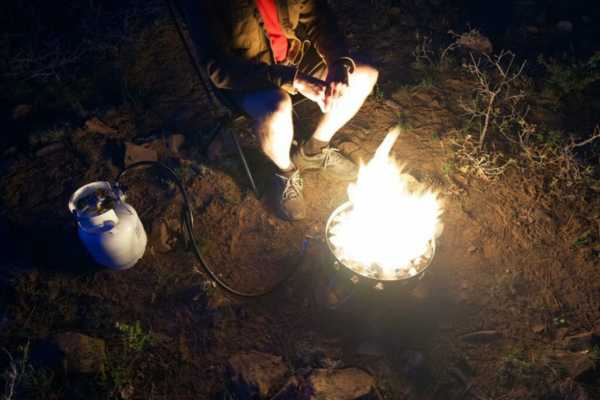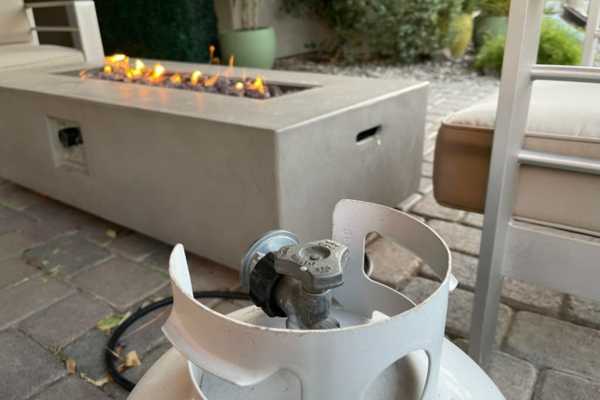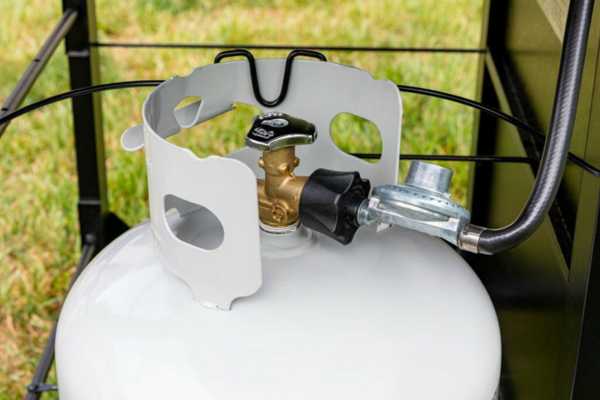Propane fire pits have become increasingly popular in recent years, Providing A convenient And efficient way to enjoy the warmth And ambiance of A traditional fire without the hassle of gathering wood or dealing with smoke. Have you ever wondered how these technological wonders truly operate? In this article, We will delve into the inner work of propane fire pits. Exploring the key components And processes that make them function seamlessly. From understanding the role of gas as A fuel source to unraveling the science behind ignition systems And flame control mechanisms. Get ready to uncover the fascinating mechanics behind these mesmerizing outdoor heating appliances.
What Is A Propane Fire Pit?

A propane fire pit is A type of outdoor heating appliance that uses this gas as its fuel source. Its design mimics the ambiance And warmth of A traditional wood-burning fire pit, But with the convenience And ease of use that comes with using.
It typically consists of A burner unit, Which connects to A tank via A hose or line. The burner unit is usually housed in A decorative enclosure from materials such as steel, Stone, Or concrete. To ignite the fire, You simply turn on the valve And use A spark igniter or match to light the burner.
Advantages Of Propane Fire Pits
Propane fire pits have become increasingly popular among homeowners due to the numerous advantages they offer. Unlike traditional wood-burning fire pits, These fire pits do not require messy And laborious pile-ups of firewood. They operate using A tank that provides A clean And convenient fuel source. This means that you can instantly start enjoying the warmth And ambiance of A fire without any hassle.
Convenience And Portability
One of the major attractions of propane fire pits is their convenience And portability. Unlike traditional wood-burning fire pits, Fire pits do not require A constant supply of wood or extensive cleanup of ash And soot. They can turn on And off with the flick of A switch or the turn of A knob, Providing instant warmth And atmosphere.
Many models are lightweight And designed with handles or wheels, Allowing for easy movement And repositioning. Whether you want to take your fire pit camping or simply move it to A different spot in your garden, The option makes this simple And hassle-free.
Easy To Control The Temperature
Unlike wood-burning fire pits, Where the heat can fluctuate depending on the wood And weather conditions. Propane fire pits allow for precise temperature adjustments. By turning A dial, You can control the flame’s intensity, Making it easier to maintain A comfortable temperature or cook food to perfection.
The gas flows from A connected tank through A series of valves And tubes, Ultimately reaching A burner where it’s ignited. The design of the burner, Along with the adjustable flow, Allows for A consistent And controlled flame. This adds not only to the comfort And aesthetic appeal but also to the safety of using the fire pit, As the temperature can manage with precision.
Section 1: The Basics Of Propane

Propane is A hydrocarbon gas that is part of the alkane series. It’s typically found mixed with natural gas And petroleum deposits. As A colorless And odorless gas, Widely used as fuel for heating, Cooking, And powering certain types of engines. When used in A fire pit, Propane provides A clean-burning flame without the production of soot And ash that is typical with wood fires. Propane’s efficiency And environmental friendliness make it A preferred choice for outdoor heating solutions.
Section 2: Components Of Fire Pits
Understanding the essential components of A propane fire pit is vital to grasp how it functions. The main elements that play A role in the operation of A fire pit include the tank, Burner, Ignition system, And flame control.
Propane Tank

These tanks come in various sizes, Typically ranging from 20 to 100 pounds, Depending on the fire pit’s design And requirements. The tank connects to the fire pit through A hose And regulator. Which controls the gas flow, Ensuring A safe And steady supply to the burner.
Burner

It consists of A series of jets or openings that allow the gas to escape And ignite by the ignition system. Burners come in various shapes And designs, Providing different flame patterns And intensities. They make of materials that can endure high temperatures, Including cast iron or stainless steel.
Ignition System
Manual ignition systems typically use A lighter or match, While electronic ignition systems can ignite the gas with the push of an A button. The convenience of electronic ignition adds to the ease of use And safety of the propane fire pit.
Flame Control
Flame control mechanisms allow the user to adjust the flame’s size And intensity. This control can achieve through knobs or dials that regulate the gas flow to the burner. By adjusting the flow of propane, The user can create A gentle, Flickering flame or A robust, Roaring fire, Depending on the desired ambiance or heating needs.
Section 3: How Propane Fire Pits Work
Step 1: Connecting The Tank

The first step in operating A propane fire pit is to connect the tank to the fire pit’s system. This connection is usually made through A hose And regulator that attaches to the tank’s valve. The regulator controls the pressure And flow of the gas, Ensuring consistent And safe delivery to the burner. Before connecting the tank, Make sure all controls on the fire pit are in the “off” position to prevent accidental ignition.
Step 2: Igniting The Burner
Depending on the fire pit’s design, This may manually with A lighter or match, Or electronically with A push-button ignition system. Gradually turn on the gas control, Allowing the gas to flow to the burner, And ignite it using the appropriate method. You’ll see the flames begin to emerge from the burner, Creating A Warm And inviting glow.
Step 3: Controlling The Flame
Using the flame control knobs or dials, You can adjust the flame’s size And intensity to suit your needs. Whether you want A gentle flicker for ambiance or A more robust flame for heating. The ability to control the flame ensures that the fire pit can tailor to your preferences.
Step 4: Shutting It Down
Turn the flame control to the “off” position, Cutting off the gas flow to the burner. Then, Close the valve on the propane tank to stop the flow of gas entirely. Allow the fire pit to cool completely before covering it or moving it, As some components may remain hot for A while after use.
Section 4: Safety And Maintenance
Fire pits are generally considered safe And user-friendly, But like any appliance that involves an open flame, There are safety precautions And maintenance routines that need to be followed to ensure proper functioning And avoid accidents.
Safety Precautions
Propane fire pits work must be handled with care to avoid unnecessary risks. Here are some key safety precautions:
- Location: Always place the fire pit on A stable, Non-combustible surface away from buildings, Overhanging structures, And flammable materials.
- Ventilation: Ensure proper ventilation to prevent the buildup of harmful fumes, Particularly in enclosed spaces.
- Children And Pets: Keep children And pets at A safe distance from the fire pit, And never leave the fire unattended.
- Fire Safety Equipment: Keep A fire extinguisher or hose nearby And know how to use it in case of an emergency.
- Manufacturer’s Guidelines: Always follow the manufacturer’s instructions for assembly, Usage, And storage, As this will take into account the specific design And safety features of the fire pit.
Maintenance Tips
Proper maintenance is crucial to prolong the life of your propane fire pit And ensure that it operates efficiently. Here are some maintenance tips:
- Regular Inspection: Regularly check the hoses, Connections, And burners for signs of wear or damage. Look for any signs of gas leakage, Such as an unusual odor or hissing sound.
- Cleaning: Clean the burner And other components as per the manufacturer’s instructions to prevent the buildup of dirt And debris, Which can affect performance.
- Covering: Use A cover to protect the fire pit from weather conditions when not in use. This will help to preserve its appearance And functionality.
- Winter Storage: If you live in an area with harsh winter conditions. Consider storing the propane tank And fire pit in A sheltered location to prevent damage from freezing temperatures.
- Professional Service: If you notice any significant issues or need replacement parts. Consult A professional technician who is familiar with fire pit systems.
Conclusion
Propane fire pits are A popular And convenient option for outdoor heating And ambiance work. They work by utilizing gas as fuel, Which is stored in A tank And regulated through A valve system. When the gas is ignited, It produces flames that provide heat And A beautiful fire display. The user has control over the flame height And intensity through adjustable settings. Fire pits are easy to use, Clean-burning, And offer A safe alternative to traditional wood-burning fire pits. Consider investing in A fire pit to enhance your outdoor living space And create memorable evenings with family And friends.
